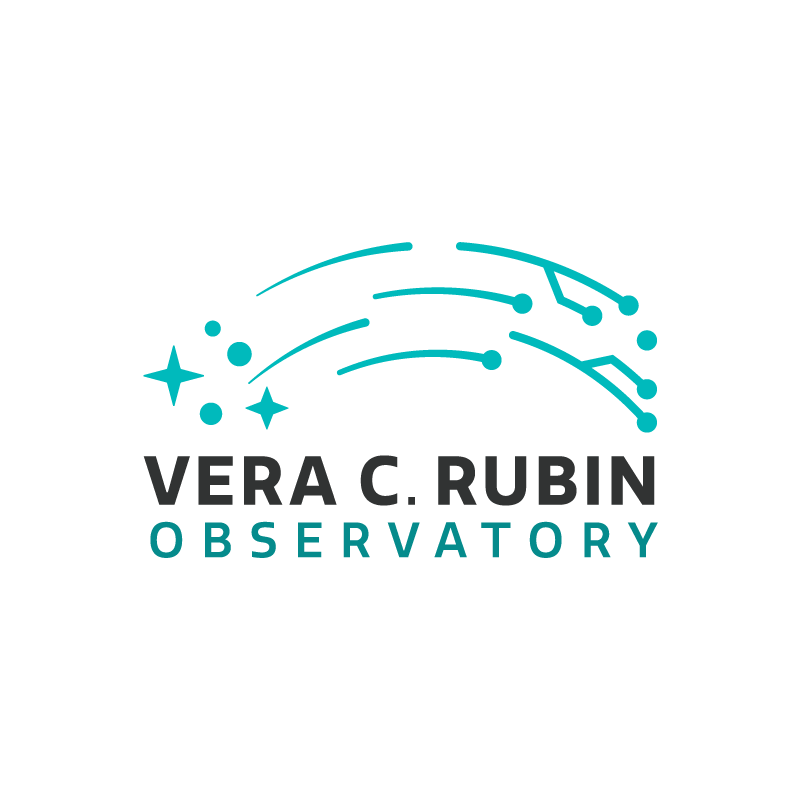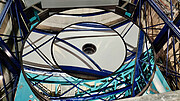Rubin Team Installs Primary Mirror
With the installation of the 8.4-meter combined primary/tertiary mirror (M1M3), Rubin Observatory now has a complete telescope
14 October 2024
In early October, the team on Cerro Pachón installed Rubin Observatory's 8.4-meter combined primary/tertiary mirror (M1M3) on the Simonyi Survey Telescope for the first time. This is a huge achievement in itself, and — with all three mirrors and the commissioning camera (ComCam) now in place — Rubin Observatory officially has a complete telescope! After getting this configuration of the telescope on-sky and conducting several months of testing, the summit team will remove the 144-megapixel ComCam and install the final science component: the car-sized, 3200 megapixel LSST Camera.
Getting the M1M3 on the telescope involved months of intensive work and contributions from many members of the Rubin team as well as contracted workers on the summit. As always, safety was the top priority in all activities to protect personnel and to prevent damage to the delicate glass mirror.
Prior to the installation (and after being coated with protected silver in April), the mirror was integrated with its steel support structure, the M1M3 cell. After connecting all the mirror support actuators and the essential utilities and testing the mirror cell assembly, the team outfitted the mirror with light baffles to block stray light from each of its two differently-curved surfaces.
After giving the mirror a final cleaning with CO2, the team used the custom-built M1M3 transport cart and rail system to move the mirror cell assembly into the vertical platform lift, which took it from the maintenance hall on the 3rd level of the observatory to the 8th level telescope floor. The combined weight of the mirror, cell, and transport cart is about 67,000 kg (~74 tons)! Another set of rails helped the team drive the mirror cart from the lift to its place under the hulking telescope mount.
Over the next two days the team inserted and torqued 196 bolts — a combination of 136 imperial and 60 metric bolts across multiple surfaces and connection points — to securely attach the mirror and cell on the telescope. Then they moved the transport cart away and back to level 3, leaving the beautiful, complete telescope you can see in the photo above.
There's a lot of work to do in the weeks ahead to re-balance the telescope mount and get all the components ready for the telescope mount to move, but we're all looking forward to the next major achievement — getting this telescope on-sky and taking observations with ComCam!
More information
NSF–DOE Vera C. Rubin Observatory, funded by the U.S. National Science Foundation and the U.S. Department of Energy’s Office of Science, is a groundbreaking new astronomy and astrophysics observatory under construction on Cerro Pachón in Chile, with first light expected in 2025. It is named after astronomer Vera Rubin, who provided the first convincing evidence for the existence of dark matter. Using the largest camera ever built, Rubin will repeatedly scan the sky for 10 years and create an ultra-wide, ultra-high-definition, time-lapse record of our Universe.
NSF–DOE Vera C. Rubin Observatory is a joint initiative of the U.S. National Science Foundation (NSF) and the U.S. Department of Energy’s Office of Science (DOE/SC). Its primary mission is to carry out the Legacy Survey of Space and Time, providing an unprecedented data set for scientific research supported by both agencies. Rubin is operated jointly by NSF NOIRLab and SLAC National Accelerator Laboratory. NSF NOIRLab is managed by the Association of Universities for Research in Astronomy (AURA) and SLAC is operated by Stanford University for the DOE. France provides key support to the construction and operations of Rubin Observatory through contributions from CNRS/IN2P3. Rubin Observatory is privileged to conduct research in Chile and gratefully acknowledges additional contributions from more than 40 international organizations and teams.
The U.S. National Science Foundation (NSF) is an independent federal agency created by Congress in 1950 to promote the progress of science. NSF supports basic research and people to create knowledge that transforms the future.
The DOE’s Office of Science is the single largest supporter of basic research in the physical sciences in the United States and is working to address some of the most pressing challenges of our time.
NSF NOIRLab, the U.S. National Science Foundation center for ground-based optical-infrared astronomy, operates the International Gemini Observatory (a facility of NSF, NRC–Canada, ANID–Chile, MCTIC–Brazil, MINCyT–Argentina, and KASI–Republic of Korea), NSF Kitt Peak National Observatory (KPNO), NSF Cerro Tololo Inter-American Observatory (CTIO), the Community Science and Data Center (CSDC), and NSF–DOE Vera C. Rubin Observatory (in cooperation with DOE’s SLAC National Accelerator Laboratory). It is managed by the Association of Universities for Research in Astronomy (AURA) under a cooperative agreement with NSF and is headquartered in Tucson, Arizona.
The scientific community is honored to have the opportunity to conduct astronomical research on I’oligam Du’ag (Kitt Peak) in Arizona, on Maunakea in Hawai‘i, and on Cerro Tololo and Cerro Pachón in Chile. We recognize and acknowledge the very significant cultural role and reverence of I’oligam Du’ag (Kitt Peak) to the Tohono O’odham Nation, and Maunakea to the Kanaka Maoli (Native Hawaiians) community.
SLAC National Accelerator Laboratory explores how the universe works at the biggest, smallest and fastest scales and invents powerful tools used by researchers around the globe. As world leaders in ultrafast science and bold explorers of the physics of the universe, we forge new ground in understanding our origins and building a healthier and more sustainable future. Our discovery and innovation help develop new materials and chemical processes and open unprecedented views of the cosmos and life’s most delicate machinery. Building on more than 60 years of visionary research, we help shape the future by advancing areas such as quantum technology, scientific computing and the development of next-generation accelerators. SLAC is operated by Stanford University for the U.S. Department of Energy’s Office of Science.
Links
- Rubin Observatory announcement
- Vera C. Rubin Observatory website
- Vera C. Rubin Observatory images
- More Rubin images
- Rubin videos
- Rubin multimedia resources
- Check out other NOIRLab Organization Releases
Contacts
Željko Ivezić
Director of Rubin Construction
Professor of Astronomy, University of Washington/AURA
Tel: +1-206-403-6132
Email: ivezic@uw.edu
Sandrine Thomas
Deputy Director for Rubin Construction
Email: sthomas@lsst.org
Aaron Roodman
Deputy Director for Rubin Construction
Email: roodman@slac.stanford.edu
Victor Krabbendam
Project Manager for Rubin Construction
Email: vkrabbandam@lsst.org
Josie Fenske
Jr. Public Information Officer
NSF NOIRLab
Email: josie.fenske@noirlab.edu
Ranpal Gill
Communications Manager for Rubin Construction
Email: rgill@lsst.org





